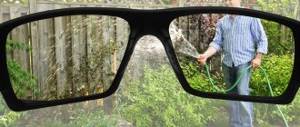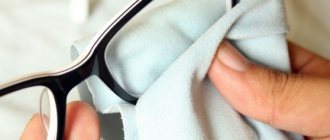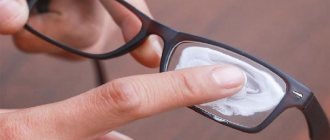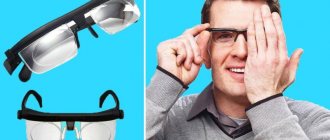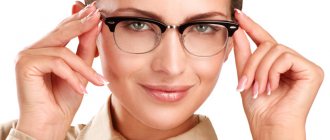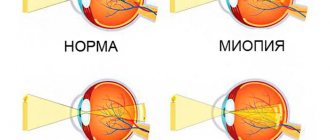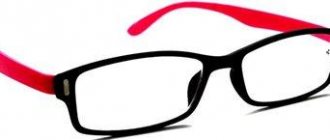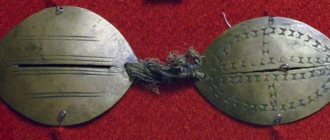2018-03-30 20:14:27 0 1828
Maybe you play sports professionally? For many sports, sports glasses are part of the uniform or an integral part of the athlete's equipment. If an athlete sees well, he needs reliable protection from factors that irritate and damage the retina, as well as protection from injuries. But what if your eyesight is poor and your eyes need prescription glasses for sports? Sports glasses or sunglasses, what to choose. For sports and an active lifestyle, some (to avoid additional expenses) use sunglasses. Sometimes sports fans specifically select sunglasses made in a sporty style. But it is very important that glasses are not only stylish, but also functional. Made specifically to suit the sport you play. In difficult weather conditions, the right glasses for sports allow you to see clearly, that is, to correctly assess the situation. Sports glasses create comfort (protection from the sun, wind), which certainly affects the performance of sports activities.
Reasons for the popularity of fitted glasses
The close-fitting shape has gained popularity in sports and sunglasses collections in many countries, and the demand for glasses of this design continues to grow. Conventional frames do not provide a wide field of vision; in some cases, when wearing them, the user must often turn his head or look over the lenses. Fitted frames better fit the shape of the face, and their lenses more reliably protect the eyes from exposure to wind, dust, dirt, splashes of water, and bright sunlight. The lenses in such glasses provide a wider field of view, and you simply cannot look over them or into the “empty” side gap. It should not be forgotten that close-fitting glasses are very fashionable and stylish, giving the consumer a modern, sporty look. Why are adjacent frames not introduced into the production of corrective glasses? The main reason is that the design of modern corrective spectacle lenses is based on fairly flat surfaces with a small radius of curvature, which do not fit well with the adjacent shape of the frames. The flattened design of spectacle lenses appeared in the 1980s, when frames with large light openings came into fashion. The use of convex spectacle lenses made the glasses very massive and heavy, so the development of lens design occurred in the direction of flattening them and reducing their thickness. Large glasses were subsequently replaced by glasses with small light openings, but since the flattened lens design worked well with these frames, its concept continued to dominate.* Today, the market is dominated by lenses that do not fit well with heavily curved adjacent frames, although in recent times This situation is gradually beginning to improve with the introduction of lenses that are specifically designed to fit adjacent frames in terms of both curvature and optical characteristics. Another challenge in creating close-fitting prescription glasses has been the development of frames that can securely hold spectacle lenses with high surface curvature. The higher the base curvature of a lens, the more difficult it is to create a facet groove that will hold such a lens.
Features of the position of lenses in adjacent frames
The curvature and close-fitting shape that makes sports glasses so functional influences the optical properties and placement of the lenses in the frame. Sports eyeglass frames differ from standard prescription eyeglass frames. If conventional corrective lenses are installed in an adjacent frame, then as a result of changing their inclination in the direction of view, the user of glasses will find a change in the optical power of the lens, unwanted astigmatism and a prismatic effect. As follows from the materials, the detected deviation of the optical power, the amount of unwanted astigmatism and the prismatic component depend on the angle of inclination of the frame from the horizontal plane. The detectable deviation from the prescription power and the prismatic component when inserting conventional flattened lenses into an adjacent frame can be intolerable to the spectacle wearer, especially with high lens refractions. Even an afocal (non-diopter) lens, when assembled into an adjacent frame, can create a prismatic effect that causes discomfort for some glasses correction users. That is why many manufacturers of sports and close-fitting sunglasses with afocal lenses produce decentered lenses, with the resulting prismatic component corrected. The mathematical calculations required to determine the required compensation for astigmatic error and prismatic component are known, so many companies have developed software that allows them to produce special corrective lenses for adjacent frames.
What lenses are needed for sports frames?
It is the presence of interchangeable lenses that is often one of the important distinguishing features of sports glasses - the kit includes lenses for various weather conditions.
There are highly specialized sports glasses designed for various sports:
- skiing;
- swimming;
- biathlon;
- cycling;
These glasses prevent water, gunpowder, glare of light, snow, dust, wind and other “irritants” from getting into your eyes. Models with lenses designed for vision correction are also available if the athlete needs it. In sports glasses frames, it is recommended to install lenses made of polycarbonate, Trivex and tribrid.
The color of the lenses is also of decisive importance and depends on the application and many other factors.
Colored lenses are most often used in the production process:
- amber and brown for skiing;
- lilac or pink - for swimming;
- green – for cycling;
- mirrored, where light reflection is necessary;
- Contrast lenses increase the athlete's visual acuity, contrast in color perception, and clarity of vision.
Corrective lenses for fitted frames
Prescription laboratories have already appeared abroad, optimizing the design of spectacle lenses for adjacent frames and producing prescription lenses with a high curvature of the base surface - 7 or 8 diopters. , in particular, has developed special formulas that allow optimization of lens design during their production in the laboratory. Special software for these purposes is also used in laboratories. The range includes monofocal lenses with a base surface curvature of 8 diopters, made in the refraction range from –5.0 to +5.0 diopters, as well as progressive lenses in the refraction range from +2.0 to –2.0 diopters with a cylindrical component up to –2.0 diopters. In addition, it has developed a special “Spazio” lens design for adjacent frames, which provides atoric optimization of the front surface of the lenses to improve peripheral vision. In turn, Maui Jim has created special laboratories that produce prescription lenses for adjacent sports glasses. produces polycarbonate lenses for adjacent frames in the refraction range from +5.0 to –5.0 diopters with various types of surface modification - with anti-reflective and mirror coatings, as well as polarized lenses. The range includes prescription lenses with high surface curvature (8 diopters) in the refraction range from +2.0 to –3.0 diopters and with a cylindrical component up to –3.0 diopters. Others, Bolle', Serengeti, collaborate with some laboratories to produce sports corrective glasses that provide good protective properties and vision correction. presented at the MIDO 2005 exhibition in Milan its “prescription” program of sports glasses for people in need of optical vision correction. It released 12 models of sports glasses with corrective lenses in the refraction range from +1.5 to –4.0 diopters. The Israeli manufacturer of spectacle lenses recently introduced new lenses in the “Attitude” series; These are progressive lenses specifically designed to fit around your glasses. At the Milan exhibition, the Rodenstock concern presented new individual sports lenses “Impression Sport”. The design of these lenses focused on dynamic vision capabilities. As a result, these lenses have a larger distance zone than all known progressive lenses. It has been established that when playing sports, near vision (40 cm) plays a secondary role. More important for athletes is a distance of about 60 cm (for example, the length of an outstretched arm - to the speedometer when riding a bicycle). Based on these data, the near zone in the Impression Sport lenses was calculated and designed for a working distance of approximately 60 cm. The maximum reduction in float effect was achieved for these lenses. Thus, presbyopes finally have the ideal opportunity to play sports with glasses. The unique properties of Impression Sport progressive lenses are based on taking into account individual parameters (frame features and centering data) when calculating the design, which allows you to achieve the best quality of vision correction. According to the Rodenstock concern, the following three types of glasses were considered most suitable for sports: 1) sports glasses with lenses with a very high curvature of the base surface; 2) sports glasses with special additional clips (clip-in); 3) sports glasses with lenses of normal curvature. All of the above types have a common property: the position of the lenses in front of the eyes differs significantly from that in conventional corrective glasses. As a result, regular lenses are of little use for sports glasses, since when they are installed in a curved frame, strong distortions begin to appear. To avoid this, the design of sports lenses should be specifically optimized for sports-fitting frames. The Rodenstock concern has developed an entire program of spectacle lenses that would be suitable for a wide range of sports and would meet the vision quality requirements for sports. Corrective lenses for adjacent sports glasses have already appeared on the Russian optical market. During the Moscow exhibition “MSOO-2005” she held a seminar dedicated to German spectacle lenses (“R+H”). applies an original method for calculating prescription lenses “Sports” for sports glasses and offers its customers a special tool for accurately measuring the bending angle of the frame, the rules for working with which were demonstrated during the seminar. To order “Sports” lenses, you need to measure the parameters of the frame (curvature, diameter, size of the bridge of the nose and light openings, frame bending angle), and also provide data on the required optical correction - the values of the spherical and astigmatic components, the direction of the cylinder axis, interpupillary distance, vertical position of the center of the pupils. Lenses manufactured on the basis of this information have lower astigmatic aberrations and provide high visual acuity in the peripheral zone. “Sports” lenses are made in the refraction range from 0.00 to +4.00 and from –0.25 to –4.0 diopters with a cylindrical component up to +2.0 diopters.
For what sports are sports glasses produced?
Sports glasses can be divided into outdoor, indoor, contact sports and water sports glasses:
— Golf glasses
— Goggles for skydivers
— Cycling glasses
— Swimming goggles
— Goggles for alpine skiing and cross-country skiing
Another category that deserves attention is children's sports glasses. Glasses for sports activities for children and adolescents are characterized by increased requirements for eye safety.
Frame requirements
Not all adjacent frames are suitable for prescription lens assembly. Your customers have probably brought you cheap, close-fitting sunglasses in which the lenses are integral with the frame or which have a subtle, shallow facet groove. Frames that are designed only to hold lenses of a certain thickness, bracket systems for afocal lenses, and frames with lenses attached to a fishing line are also not suitable for assembling prescription lenses. When assembling prescription lenses with a surface curvature of 7 diopters or more into a frame with lenses mounted on a fishing line, the facet groove will look unaesthetic. However, there are frames whose design makes them suitable for the assembly of prescription lenses with high surface curvature. These are durable plastic frames with good faceting as they can be straightened to the desired angle. Fitted metal collapsible frames and some rimless eyeglass designs may also be used. When choosing frames for fitted sports glasses, it is necessary to pay attention to the following factors at the order stage: - Fit of the bridge of the nose/nose pads. It is the nose pads and the bridge of the nose, as well as the temples, that keep the glasses in the required position during active sports. The user simply may not have the time or opportunity to adjust his glasses. Providing good protection from wind and sun, glasses of a close-fitting shape can “sit” on the cheeks, adjacent to the brow ridges. Not all fitted frames are easy to straighten - they either fit a particular client or they don't. — Alignment of the temples. Correct alignment of the temples ensures the safety and comfort of the athlete user. Elastic temples may suit one client but cause discomfort for another. It is important whether you wear a headgear or a helmet at the same time as the glasses, as this may affect the fit of the glasses. - Length of eyelashes. Many fitted frames “sit” very close to the face, and if you have long eyelashes, a person will constantly touch the inner surface of the lenses with them. The use of corrective clips in such glasses also reduces the free space. Be sure to check how comfortable the selected lens or clip design is for you. — Vertex distance. With a sufficiently high degree of ametropia, the user of fitted sports glasses will encounter a significant change in the vertex distance, which may be very different from what is usual with a conventional flat frame. Although determining the vertex distance in fitted glasses is difficult, try to find a frame that holds the lenses at the same distance as you are used to. - Line of sight. Fitted glasses, especially those with clip-on glasses, do not always provide adequate peripheral vision. Put on your glasses and take a pose that is typical for the sport you are playing. Assess how well the frame provides the required field of vision. - Weight. Assess the possible weight of glasses with corrective lenses or clips - for high degrees of ametropia, they can double the weight of the glasses. To assess how the glasses fit and hold securely, jump up and down.
Corrective clips
As follows from the information presented above about manufacturers of lenses with high curvature of the base surface, the range of refractions is quite limited and generally does not exceed values from +2.0 to –6.0 diopters.
In this regard, for many users of sports glasses, the only solution is corrective clips. The clips are located on the inside of the adjacent glasses and are ordinary colorless corrective lenses of small diameter, mounted in a plastic or metal frame. This design of corrective sports glasses has the following advantages: - A wider range of refractions of corrective spectacle lenses. — Wider selection of afocal protective lenses. Depending on the lighting conditions, the glasses user can use protective afocal lenses of various colors and with various types of coatings. - Ease of manufacture. Corrective clips are produced using conventional corrective lenses, so their production is possible in a regular optical workshop. At the same time, when choosing a design for sports glasses with corrective clips, the following limitations should be taken into account: - Most clips are small in size and provide a narrower field of view. Some users may feel like they are seeing their surroundings through a keyhole. — Clips contribute to the weight of sports glasses and reduce the space on the inside. — The presence of clips means the appearance of additional surfaces that reflect light. In addition, the clips themselves can become dirty, reducing the light transmittance of sports glasses. — Clips have significantly less curvature than the adjacent frame, so they cannot be optimized, as manufacturers of corrective lenses with high surface curvature do. So, dear readers, close-fitting sports and sunglasses are becoming increasingly popular and in demand. And new corrective lenses with high surface curvature enable people with varying degrees of ametropia to feel comfortable wearing these glasses. Marina Pigulevskaya, Veko 8, 2005
Sports glasses with prescriptions
They are made on the basis of plastic, polarized or photochromic lenses. They make vision clear, remove unnecessary, contrasting colors, which helps the eyes remain rested for a long time. Biathlon or parachuting, swimming or auto racing, without exception, sports glasses with diopters are used everywhere. Professional athletes, who correct the pros and cons, have long appreciated the quality and reliability of sports glasses with diopters. For many sports, standards have even been developed according to which an athlete should have glasses, since this affects the contrast and range of vision, and, consequently, the result.

